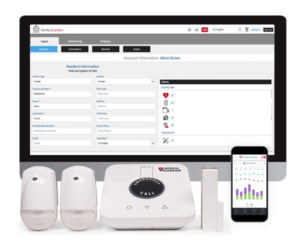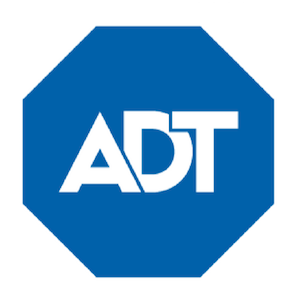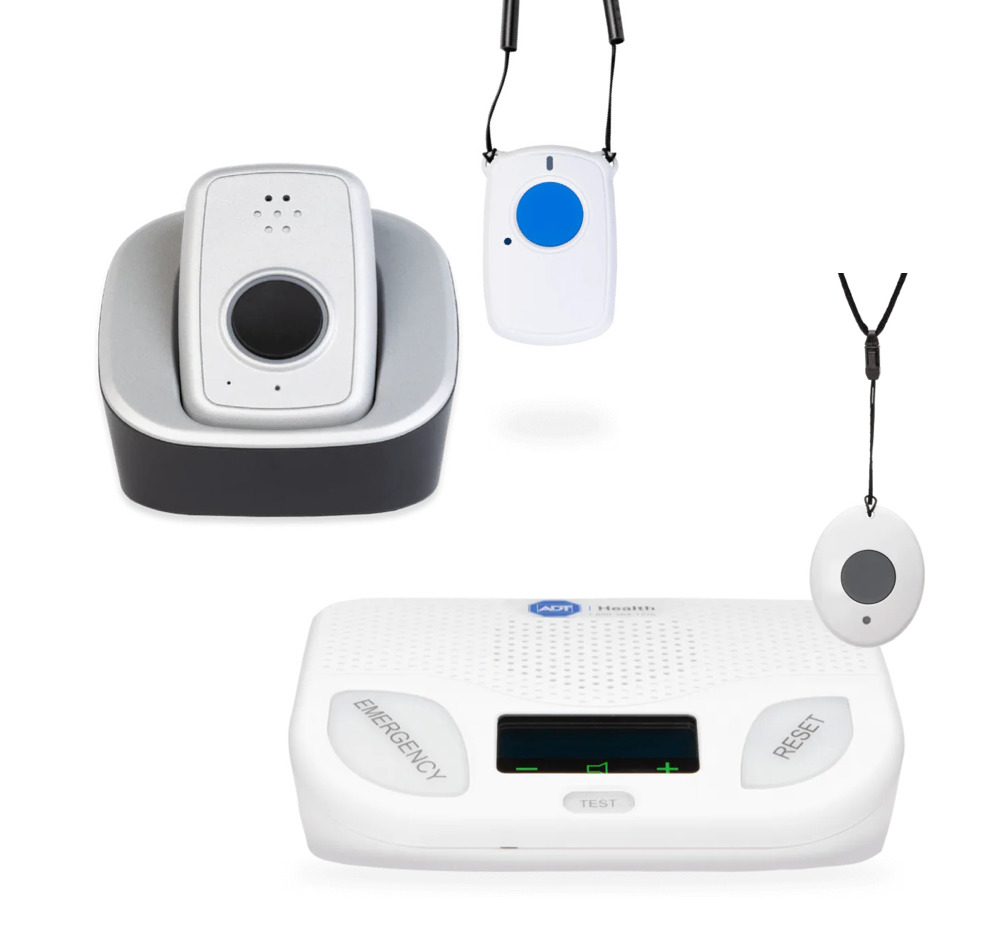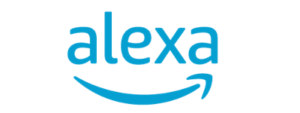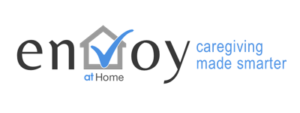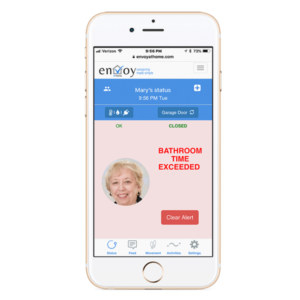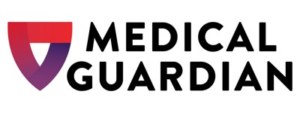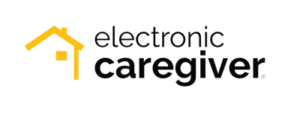Best Monitoring Systems For Elderly In The Home
Best Monitoring Systems For Elderly In The H...
Most people think of medical alert systems when searching for older adult safety devices for their loved ones. But aging-at-home technology has advanced exponentially in recent years to meet the growing demand for services and the need for more specialized remote monitoring. These systems are no longer one-size-fits-all devices. They offer special services, and some can even be customized to older adults’ specific needs.
For example, depending on the home monitoring system one uses, caregivers can be alerted to risky behaviors such as confusion, medication adherence, bathroom usage, or other fall risks.
When considering monitoring systems for elderly individuals at home, “It’s best to do lots of research and speak to representatives from each company as all systems have their pros and cons,” said Gareth Mahon, CEO of The CareSide, a home care and nursing service for the elderly and disabled.
To help you narrow your search, our team of experts at AgingInPlace.org looked at several home monitoring systems, determined which were best for certain individuals, and selected our top brands. Here’s what we found.
Key Takeaways
- Monitoring systems are not one-size-fits-all devices
- Some home monitoring systems for the elderly can alert caregivers about health or cognitive issues
- Other home monitoring systems can detect falls and provide rapid emergency response
- Some home monitoring systems are more private and only alert assigned caregivers remotely via an app
- New technology offers virtual caregivers that can learn a user’s behaviors. These services are usually more expensive
How Monitoring Systems Work for the Elderly in the Home
Home monitoring services are designed to give caregivers and their aging loved ones peace of mind while also enabling them to age in their homes as long as possible. Since older adults can have a wide range of health and mobility issues, these systems work differently depending on the type of service. Some alert first responders in the event of an emergency. Others notify caregivers if risky behavior is identified. Some provide medical data to the user’s healthcare team. Read on as we explore the different monitoring systems for elderly individuals in the home.
Different Types of Monitoring Systems
Monitoring systems for the elderly offer a variety of features. These systems can be used alone or paired with another monitoring system depending on your loved one’s needs. Common types of monitoring systems include:
- Voice-activated services
- Movement sensors
- Video monitoring
- Personal emergency response systems
- Medical monitoring
- Comprehensive artificial intelligence home systems
Benefits of Monitoring Systems for the Elderly in the Home
Monitoring systems for the elderly provide numerous benefits beyond helping individuals age at home. These include:
- Early detection of cognitive and medical health issues
- Peace of mind for caregivers and their loved ones
- Heightened home security and monitoring of safety issues, such as room temperature spikes or drops
- Reduced healthcare costs
- More opportunity to connect remotely with loved ones farther away
Top Monitoring Systems for the Elderly in the Home
Here are our top elderly monitoring systems, which include personal emergency response systems, voice-activated services, movement sensors, video monitoring, medical monitoring, and even comprehensive artificial intelligence (AI) home systems.
Type: Personal emergency response system
Price: $29.95–$37.95/month for at-home systems. At-home system with cellular connection requires a one-time $149.95 equipment fee.
Features:
- 24/7 monitoring that links users directly to emergency operators
- Mobile options available
- Fall detection available for an additional monthly cost
- Wearable devices are water-resistant
- Two-way speaker with most devices
- Jewelry accessories available to disguise wearable pendants
- Smartwatch model available, but it doesn’t include fall detection
Editor’s Choice
What Is Editor’s Choice?
Our team of editors and writers choose a product from each article that stands out based on our extensive research of the products we review. While it may not always be the highest-scoring product in the lineup, we’ve chosen the product based on its overall value to our audience.
Why We Chose This Product:
We like Medical Guardian’s multiple monitoring system options: in-home, mobile, and smartwatch. These options give older adults more options to choose a medical alert system that’s best for their activity level. Medical Guardian is one of the only medical alert brands to offer voice-activated wall buttons, another standout feature for monitoring older adults at home. Voice activation helps extend the wall button’s coverage area since the user doesn’t need to be within arm’s reach to contact the monitoring center.
Type: Personal emergency response system
Price: $29.99–$39.99 per month
Features:
- Safe home temperature monitoring with in-home systems
- Systems are connected to 24/7 ADT-owned and -operated monitoring centers
- Landline and cellular connections are available for in-home systems
- Mobile medical alert system option
- Additional pendants are available to monitor multiple people in one home
Type: Voice-activated service
Price: $19.99 per month or $199 per year. (Free 30-day trial offer going on now). Plus the cost of an Alexa device for the user and caregivers.
Features:
- Keeps up with users’ activities via the activity feed
- Can alert caregivers to specific activities, such as when door sensors are activated
- Alexa will notify caregivers if the user hasn’t communicated with the device within a certain period
- A user can ask Alexa to call for help, and Alexa will immediately contact assigned caregivers
- Enables caregivers to “drop in” on loved ones to visit or assess worrisome conditions
- Can hook up to third-party fall detection devices, which will alert caregivers to falls
Type: Movement sensors
Price: $399 for starter equipment package with eight sensors and a hub. $99.99 monthly service charge. Additional sensors can be purchased for $29.99 each.
Features:
- Uses discrete sensors to track behavior: no cameras, microphones, listening devices, GPS tracking, or wearable technology
- Sensors can be placed on front doors to monitor when someone opens the door
- Bathroom sensors can detect toilet frequency and duration
- System enables remote unlocking of the front door for first responders
Type: Video monitoring
Price: $52.99 one-time cost for E1 Pro indoor camera
Features:
- Equipped with dual-band Wi-Fi security camera with full HD video and motion detector
- Cameras allow for two-way audio
- Cameras have night vision for improved visibility of nighttime videos
- Cameras can do a 355-degree pan and 50-degree tilt
- Remote live view available anytime to check on loved ones
- Can be used to discreetly check on the care your loved one receives from home health or other caregivers
Type: Medical monitoring
Price: $59.99 per month and one-time $25 activation fee for the Pro Health service. Most add-ons require an additional $55 one-time fee.
Features:
- 24/7 emergency response
- Physician-on-demand services
- 24/7 medication reminders
- Works with add-on devices from Pro Health system such as glucose monitor, blood pressure monitor, and pulse oximeter
- Non-contact thermometers and weight scales are also available to track temperature and weight
Type: Comprehensive AI home service
Price: About $400 per month (company estimates cost at $13.30 per day)
Features:
- Interactive virtual caregiver is programmed to recognize users and can learn their behaviors
- System can also give memory stimulation exercises, medication reminders, or rehab for agility and strength
- 24/7 emergency response available
- Vitals monitoring available
- Certified professional installment of Addison touch screens within home
How to Choose the Right Monitoring System for the Elderly in the Home
When shopping for a monitoring system, you’ll want to ensure the device meets your loved one’s specific needs. You should ask yourself certain questions before purchasing a home health monitoring system:
- What health issues does your family member have and do they require regular monitoring?
- Does your loved one become confused or are they prone to wandering?
- Is your family member at risk of falling?
- Do hired aides stay with your loved one part-time or full-time?
- Are you concerned about your loved one’s eating or bathroom habits?
- Will your loved one wear a lanyard or wristband device?
- How much is your budget for a monitoring system for the elderly in the home?
Bottom Line
Technology has taken remote caregiving to new levels, with various services designed to help elderly individuals age at home as long as possible. “Someone who wanders will be best with a GPS tracking system which works out of the home,” Mahon advises. “Some systems have built-in alarms which can be set to prompt users to take medications or meals.”
But these specialized services do come at a price, which can be pretty steep depending on the system and services needed. Considering the cost of assisted living or 24-hour skilled nursing care, you can rest assured knowing that elderly monitoring services are a bargain at a fraction of the price. And the peace of mind they give both the caregiver and the person being monitored? Well, that’s priceless.
Frequently Asked Questions
-
Most people are familiar with at-home medical alert systems, which offer quick responses at the touch of a button. But there are many elderly monitoring systems on the market designed to meet more specific needs of elderly individuals, including fall detection, bathroom monitoring, health trend tracking, and wandering alerts.
Pricing is Accurate as of January 3, 2023
WRITTEN BY
Jennifer Walker-Journey is a former Marketing & Communications Director for continuum care facilities where she advocated for the quality care of elderly and disabled individuals living in independent and assisted living facilities, nursing homes, and specialized units for Alzheimer’s and dementia care. She writes extensively about eldercare safety, as well as the safety and efficacy of medications and medical devices designed to help seniors live more independent lives. Much of her research in this arena has focused on hearing aids, medical alert systems, and other devices that help seniors age in place safely and provide peace of mind to caregivers.
MEDICALLY REVIEWED BY
Jenny is an Adult-Gerontology Primary Care Nurse Practitioner in NYC with a passion for working with aging adults and their family members. Prior to her clinical training at Vanderbilt School of Nursing, she worked in business and medical research at Harvard Business School and Massachusetts General Hospital. As a Caregiving Coach at Givers, Jenny helps family members manage the financial, emotional, and educational stresses of caring for their loved ones who are aging in place.

